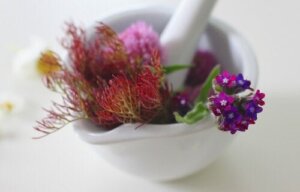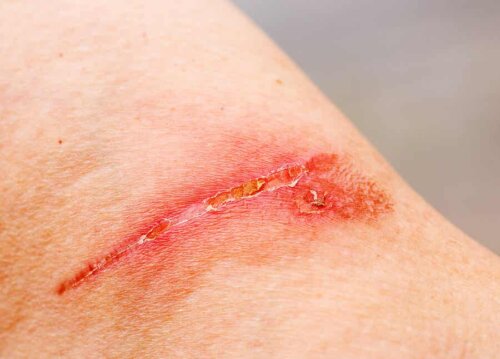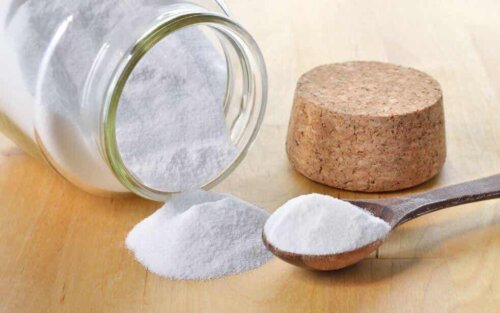Four Ways to Make a Poultice


Written and verified by the doctor Leonardo Biolatto
You can use medicinal plants, essential oils, salts, and other elements with therapeutic potential to make a poultice. This remedy is a topical preparation to use as an adjuvant for some ailments.
In fact, according to a study published in the Journal of Advanced Nursing, a warm poultice with spices such as ginger seems to mitigate the pain and stiffness caused by osteoarthritis. There’s no solid evidence in regard to these, although it’s generally a safe remedy. So how can you make poultices at home? Today’s article will tell you about four methods.
Ingredients to make a poultice
You can make a poultice with crushed or cooked herbs and then spread them between two gauzes on some part of the body where there’s pain or superficial wounds. You can also elaborate it with other supplements with anti-inflammatory and relaxing potential.
Several scientific papers, such as one published in the Cochrane database, compile some plants that, when applied topically, seem to help against swelling and pain in joint diseases. These plants include:
- Turmeric
- Arnica
- Ginger
- Dandelion
- Cat’s claw
- Eucalyptus
- Garlic and onion
- Aloe vera
There are other ingredients you can use in a poultice such as Epsom salts, baking soda, activated charcoal, and coconut oil, among others.
Read about some Medicinal Herbs to Treat Joint Pain Naturally
Ways to make it
Poultices can disinfect superficial wounds and relieve muscle tension and joint ailments. In fact, some people use them to help drain abscesses and cysts. Continue reading to learn about some recipes.

1. Herbal poultice
The topical application of a poultice with medicinal plants is usually safe in most cases. However, we advise doing a small test before using the remedy in its entirety. This is to rule out any possible allergic reactions to any of the components.
In general, this type of poultice is appropriate for inflammation, bumps, small cuts, and joint pain. Also, keep in mind these are only good as adjuvants.
Ingredients
- 1 tsp. of turmeric powder
- 1 tsp. of freshly chopped or grated ginger
- ¼ of a small sliced raw onion
- A minced garlic clove
- 2 tsp. coconut oil
- Gauze or cotton bandage
Instructions
- Firstly, add the coconut oil to a pan, and then the rest of the ingredients
- Heat it until it’s almost dry, but not burnt
- Then, transfer the mix to a bowl and let it sit until it cools down enough to be on the skin
- Spread the gauze or cotton bandage and add the mixture to the center
- Fold the bandage twice to create a bundle and, finally, place it over the affected area for 15 to 20 minutes
- Use it twice a day, every day, if the swelling persists
2. Make one with bread
Bread is another interesting ingredient to make poultices. In this case, anecdotal data suggests it’s useful for softening abscesses, cysts, or small splinters. Several applications make it easier to drain these.
Ingredients
- A slice of bread
- 3 tbsp. of milk
Instructions
- Firstly, heat the milk in a small saucepan over low heat
- Then, let it cool down until it’s just warm and comfortable to the touch
- Dip the slice of bread in the milk so as to soften them
- Then, mash it into a paste
- Apply the paste on the skin and let it do its thing for 15 minutes
- Repeat two or three times a day for best results
3. Baking soda poultice
Baking soda is an abrasive ingredient that can irritate sensitive skin. Thus, use it with caution as an adjuvant, and only in specific cases. You can apply it to superficial sunburns and minor irritations.
Ingredients
- 2 tbsp. of baking soda
- 2 tbsp. of water
Instructions
- Moisten the baking soda with the water and make a thick paste
- Then, spread the remedy on the affected area and leave it on for 10 minutes
- Finally, rinse it with warm water and repeat twice a day if necessary

4. Activated charcoal poultice
Activated charcoal has anti-inflammatory properties that contribute to the relief of insect bites. In fact, it also helps soothe skin irritations when applied topically.
Ingredients
- 1 tsp. of activated charcoal powder
- Water (enough to moisten the activated charcoal)
Instructions
- Firstly, moisten the activated charcoal with a little water and form a paste
- Then, spread the poultice on the affected area
- Leave it on for 10 to 15 minutes and remove the residue with a damp cloth at the end of that time
- Repeat the remedy twice a day until it heals
You may be interested in Two Methods to Make your Own Activated Charcoal Soap
When to make it?
We’ve already discussed several situations in which a poultice is useful such as superficial infections, wounds, burns, and muscle and joint pain. Similarly, you can apply it to abscesses and hard skin.
What you must keep in mind is poultices don’t replace medical treatments and you must only use them as a complement to these treatments or when there are none at hand.
All cited sources were thoroughly reviewed by our team to ensure their quality, reliability, currency, and validity. The bibliography of this article was considered reliable and of academic or scientific accuracy.
- Therkleson T. Ginger compress therapy for adults with osteoarthritis. J Adv Nurs. 2010;66(10):2225‐2233. doi:10.1111/j.1365-2648.2010.05355.x
- Cameron M, Chrubasik S. Topical herbal therapies for treating osteoarthritis. Cochrane Database Syst Rev. 2013;5(5):CD010538. Published 2013 May 31. doi:10.1002/14651858.CD010538
- Maroon JC, Bost JW, Maroon A. Natural anti-inflammatory agents for pain relief. Surg Neurol Int. 2010;1:80. Published 2010 Dec 13. doi:10.4103/2152-7806.73804
- Forouzanfar F, Hosseinzadeh H. Medicinal herbs in the treatment of neuropathic pain: a review. Iran J Basic Med Sci. 2018;21(4):347‐358. doi:10.22038/IJBMS.2018.24026.6021
- Zellner T, Prasa D, Färber E, Hoffmann-Walbeck P, Genser D, Eyer F. The Use of Activated Charcoal to Treat Intoxications. Dtsch Arztebl Int. 2019;116(18):311‐317. doi:10.3238/arztebl.2019.0311
This text is provided for informational purposes only and does not replace consultation with a professional. If in doubt, consult your specialist.








